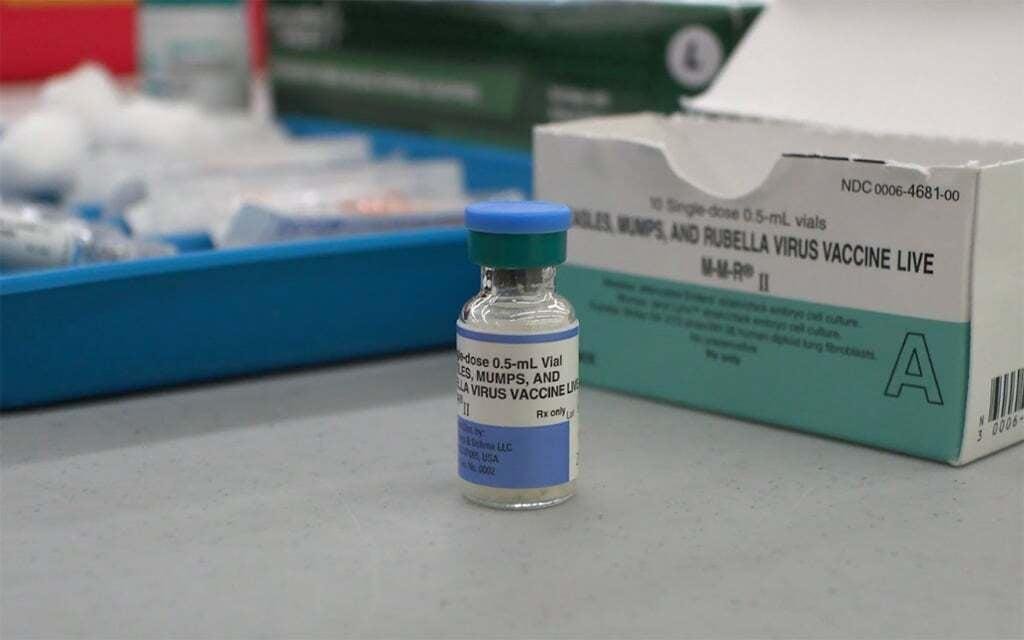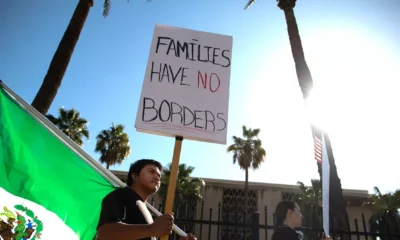Entertainment
Is Arizona’s Measles-Free Streak a Lucky Break Amid Low Vaccination Rates?

Measles, a virus once considered eliminated in the U.S. since 2002 due to effective vaccination campaigns, has resurfaced in 22 states this year. Arizona remains an exception in the current outbreak, reporting no cases, despite its relatively low vaccination rates.
Experts caution, however, that the state is not immune. In 2022, Arizona documented six measles cases, prompting concerns that it may soon face its own outbreak given the low vaccination coverage. Approximately 12% of children in Arizona are unvaccinated by the time they begin school, which significantly contributes to vulnerability against the virus.
“Community immunity is vital for effective protection, particularly for those who are immunocompromised,” stated Dr. Nick Staab, the chief medical officer and epidemiologist at the Maricopa County Department of Public Health. Public health experts maintain that at least 19 out of 20 individuals need to be vaccinated for herd immunity to be achieved.
Measles predominantly affects children under five years of age. Alarmingly, only three out of Arizona’s 15 counties—La Paz, Santa Cruz, and Yuma—have reached the 95% vaccination threshold for kindergarteners. In contrast, in Yavapai and Mohave counties, approximately 25% of kindergarteners remain unvaccinated. Maricopa County has a 10% unvaccinated rate among its kindergarten population.
The measles virus is exceptionally contagious and spreads through the air, with infection occurring even before symptoms manifest. Symptoms typically manifest within one to three weeks and include fever, cough, rash, and watery eyes. Infected individuals remain contagious four days prior and four days after the appearance of the rash.
Despite lower vaccination rates, demographics may have played a role in delaying outbreaks in Arizona. With around 20% of its residents aged 65 or older, the state’s older population can contribute to lower transmission rates. Additionally, only 21% of the population under age 18 may suggest a protective factor against spread.
Nonetheless, population density could influence the potential for outbreaks. Phoenix, where temperatures soared to 99 degrees in late March, drives individuals indoors, raising the risk of the virus thriving in crowded settings. However, Arizona’s population density is comparatively low, with 63 individuals per square mile, suggesting it could help stall an outbreak.
Recent data shows a concerning trend. The CDC recorded 285 measles cases nationwide in 2024, with the numbers rising sharply to 712 cases by April 11, 2025, including three fatalities reported in Texas and New Mexico. The majority of infections are concentrated in Texas, specifically within Gaines County. In New Mexico, nearby counties have also seen growing case totals.
Dr. Shad Marvasti, the director of Integrative Medicine at HonorHealth, speculates that there may already be undiagnosed cases within Arizona due to the lack of symptoms or medical attention. With an increasing number of residents opting out of vaccinations, experts warn that it is only a matter of time before the state experiences a resurgence of measles cases.
The state’s vaccination strategy involves administering two doses of the MMR (measles, mumps, rubella) or MMRV (which also protects against chickenpox) vaccines, with the first dose recommended between 12 and 15 months of age, followed by a booster between ages four and six. The Arizona Department of Health Services emphasizes the need for both doses to provide approximately 97% protection against measles.
Despite the rising number of outbreaks, public health authorities emphasize the importance of vaccinations. With vaccination rates in counties like Mohave (76%) and Yavapai (75.2%) declining even further compared to last year, officials express increasing concern for the health of their communities.
The ongoing measles outbreak in the U.S. remains relatively modest compared to global numbers; for example, Romania reported over 30,000 cases last year out of 127,000 documented measles cases across Europe.


















